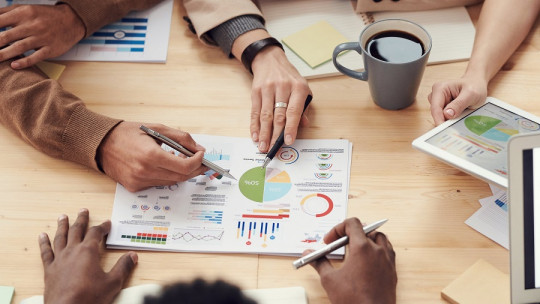If something characterizes the ability of companies to be viable in the long term, it is the way in which they develop management models for their tangible and non-tangible resources. In the end, no matter how much financing and material support an organization has in its first months of life, it will be of little use if it is not possible to find the formula that allows stability to the project for years to come, when that money has already been spent and the rest of the initial assets have become outdated or it no longer makes sense to continue using them.
However, many companies make the mistake of focusing only on the resources that are easily located in a count of the assets available: those that can either be seen and touched or can be reduced to a number. There is something that escapes this very reductionist vision of the assets of an organization : the theoretical and practical knowledge of the workforce, and their potential to easily acquire more skills and areas of experience.
Therefore, in the Spanish context, it is crucial knowing how to correctly manage the training credit available to each company through FUNDAE (State Foundation for Employment Training).
Key ideas to properly manage training credit in companies
The training credit available to companies should be seen as an organizational development tool and, therefore, as a set of opportunities to improve the ability to adapt to the market and attract and apply talent. We must not forget that for companies to be viable they cannot depend solely on hiring experts at times when a deficit of knowledge and technical skills is detected in the workforce, among other things because precisely This lack of updated professionals prevents us from recognizing these kinds of situations
However, to make the most of the potential of the training credit, it is necessary, in turn, to have the knowledge and protocols necessary to take advantage of it in the best possible way, without simply allocating it to activities that, although they may be attractive and constitute a “gimmick” with repercussions, only at the marketing level. Let’s see what are the key ideas to take into account to manage these credits in the best way and integrate them into the strategic aspects of the organization
1. Maintain a good incentive system from the beginning
To take advantage of the training credits, it is essential that, beyond their management, the company has been able to generate a correct work environment and work dynamics and incentives that motivate people to stay working even if they are the first in their department to learn key skills. In this way, your influence on the company will go beyond applying the knowledge learned only to your job for a few months, until you decide to leave the company for another that offers you the possibility of fully using the skills you know how to put into practice. practice.
To achieve this, among other things, it is good to take measures to link these training processes to the opening of promotion and advancement channels: the acquisition of new knowledge deserves to be reflected in the contractual relationship that the worker maintains with the company, and that It is not negative: it is a valve that allows those who provide more added value to be kept on staff, ensuring that both parties win in the medium and long term.

2. Have experts and department heads when deciding training areas
As we have mentioned before, it cannot be completely separated the ability to detect “know-how” deficits and the knowledge and experience in that area of work.
Therefore, it is important that the decision about how to manage training credits is not made unilaterally and always from the top down: you must have the advice and guidance of both the Human Resources staff and the most prominent experts in the departments. , so that they provide their vision on the challenges that the company must face and the type of skills that are necessary.
3. Distinguish between exploratory training and instrumental training
It is not always necessary to train in something having made the decision that this knowledge will become part of the methodologies and tools used on a daily basis by the affected workers.
It can also be positive to train key profiles in an area of knowledge, so that they can simply come into contact with new resources and ways of working, knowing their positive and negative aspects These “exploratory” training strategies help you make strategic decisions by really knowing what you are deciding, before making a large expense that perhaps would not have brought benefits or productivity improvements. In addition, they can serve to better understand the competition that does use these methodologies and tools.
4. Delineate common and differentiated training lines
There are skills that are useful in practically any area of work, while Others could only be used by members of certain departments or level of distribution of tasks
Being clear about this will help to make a correct distribution of training offers, without exposing some staff to the frustrating experience of having to learn about something that they do not understand or have the opportunity to use in their work or in their private life, and In addition, it will be necessary to avoid, as far as possible, the comparative harm that some groups in the company have access to a wide range of training and others barely have access to generic courses (this type of situation generates conflicts and worsens the work environment). , especially considering that training is linked to promotion possibilities).
Do you want to become professional in the management of business training processes?
As we have seen, the training of workers is one of the basic pillars of Human Resources. And beyond the well-known and colorful personnel selection process, HR departments need to develop programs to enhance and retain the expressed or latent talent that already exists within the organization, both to create a more satisfactory work environment and capable of offering exciting job prospects, allowing the company to adapt to new times and new goals in the most efficient way possible.
If you are interested in becoming a professional in this field, we invite you to learn about the Own University Master’s Degree in Talent Selection and Management organized by the University of Malaga (UMA) It is a one and a half year training program that addresses the two fundamental theoretical-practical blocks in Human Resources: Personnel Selection and Talent Promotion in organizations, also counting on collaborators and teaching staff from the most important companies that operate in Spain, among them, as well as the possibility of doing internships in many of them. To find out more, visit the Master’s website or contact our team.









